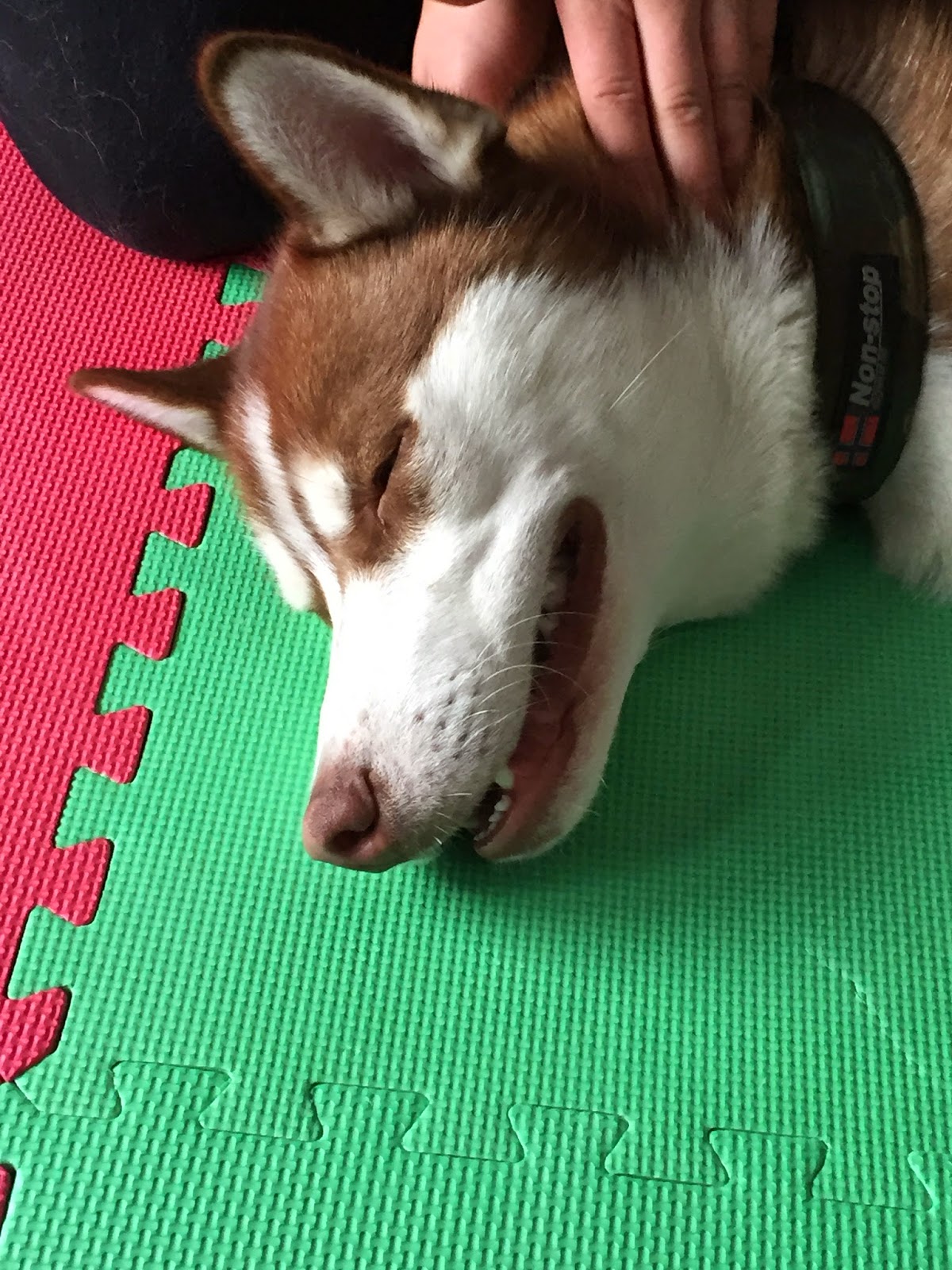I went through many of the emails and texts and messages that I had received over the years and started to put them together onto a page. As I was copying and pasting I realised a pattern seemed to be emerging. As well as “My dog says thanks for all the help Dr Les” I was getting a lot of “…and the individual handout you sent me has been very useful” type of responses too.
I guess being in academia for 21 years and teaching health service staff how to use computers for many years before that (and this was in the days of real floppy disks when most people had never used personal computers and the nearest thing you got to an email address was something weird from Compuserve like 12344679uyts@xxx.com – really memorable) (Oh…I have given my age away…whatever) have taught me the value of giving people feedback that is tailored to them.
After a treatment session I typically supply the owner with some personalised homework. Things such as a printout with the moves that would be most beneficial for their own dog’s needs, or a picture of the areas that I found to be an issue with big fat arrows saying “Work here gently” or “Fido LOVES this bit being massaged”. Surely sharing my knowledge has to be a better plan than simply keeping it all to myself. I’m a physical therapist not a magician with secrets, so being able to explain ways to benefit their own dog to the person who looks after their dog 24/7, seemed common sense to me.
Helping the dog AND giving tailored homework were both mentioned in the email I received yesterday that sparked off this observation of what we do. I went to visit Alisa in Crowborough last month to see her dogs. Buzz needed treatment, while Alisa wanted to learn a warm-up and cool-down specifically for her agility dog, Sassy. Alisa wrote “Aw bless you Dr Les, you are such a lovely man and it was a pleasure to meet you and I think Buzz would agree with that! He really does seem to be so much better in himself due to your Midas touch and I have used your warm up and cool down routines on all of the dogs and I found that Sassy found it quite relaxing when we were queuing for our turn at our agility show a couple of weeks ago. It was great knowing how to do it correctly, so I really did appreciate all the extra effort you put in providing me with an individual procedure print outs for each of them that I could refer to remind me. I do hope that your wonderful business continues to grow as I know how passionate you are about what you do and you deserve for things to go well for you as you have a special gift. Please do keep in touch as I love hearing all about Sam and Sarah who are such a brilliant advert for what you do. Best wishes Alisa, Buzz, Sassy and Holly. Xxxx”
Gosh.
The feedback I had received had lots of “My dog says come back Dr Les”, but also many comments with “What an excellent ‘how to massage my dog myself’ booklet: so clear, explanatory, & helpful, which we shall be using daily, I’ll see how we get on and will be in touch to let you know” and “Update on my dog, just given him a lovely massage- even let me touch his toes!” and even a “Many thanks Les – he’s just been out for his afternoon walk, and I may be imagining it, but he seemed more sprightly than usual! I’ll have a go and see how we get on – he certainly enjoyed it and we’ve had a few nuzzles today, I guess asking for some more massage!” which seems to be good feedback for the treatment as well as the simple homework aftercare.
I guess that being small enough to offer the personal touch is another reason why we like to do workshops and demonstrations which are all about helping your own dog. Most of our workshops are manageable in size so we can make sure we can get round to everyone to ensure that they are doing the moves correctly whether they are working on a tiny terrier or a massive mastiff.
Some of the other collected feedback can be found here. Chris said that helping the dogs AND the owners ought to be our new USP. Having just bought loads of new business cards with our latest strapline of “AchyPaw : Home to Supple Dogs”, I’ve now got to think of a new line. Meanwhile, here are some pictures of lovely smiley relaxed happy dogs we have treated over the last few years.
 |
| Bodhi deciding it was too much effort to move after his treatment |
 |
| Alisa and Buzz who sent me the lovely email |
 |
| Feebee receiving two pairs of hands |
 |
| Issey bringing me a flower after helping her walk properly again |
 |
| Leo was saying "I'll lie here, you take the selfie" |
 |
| Millie was lapping up therapy and sun |
 |
| The handsome Mr Obi |
 |
| Ollie may only have three legs but he is a happy boy |
 |
| Hetty receiving some Reiki therapy |













